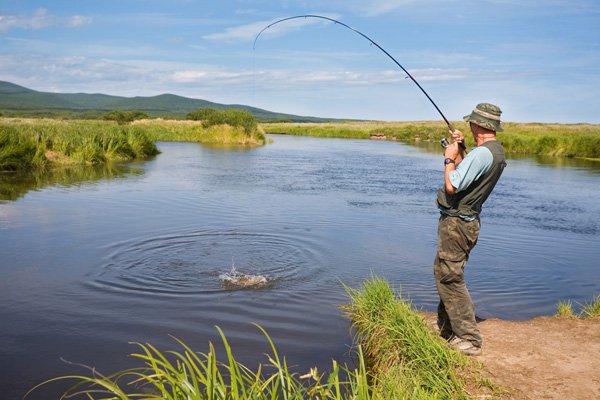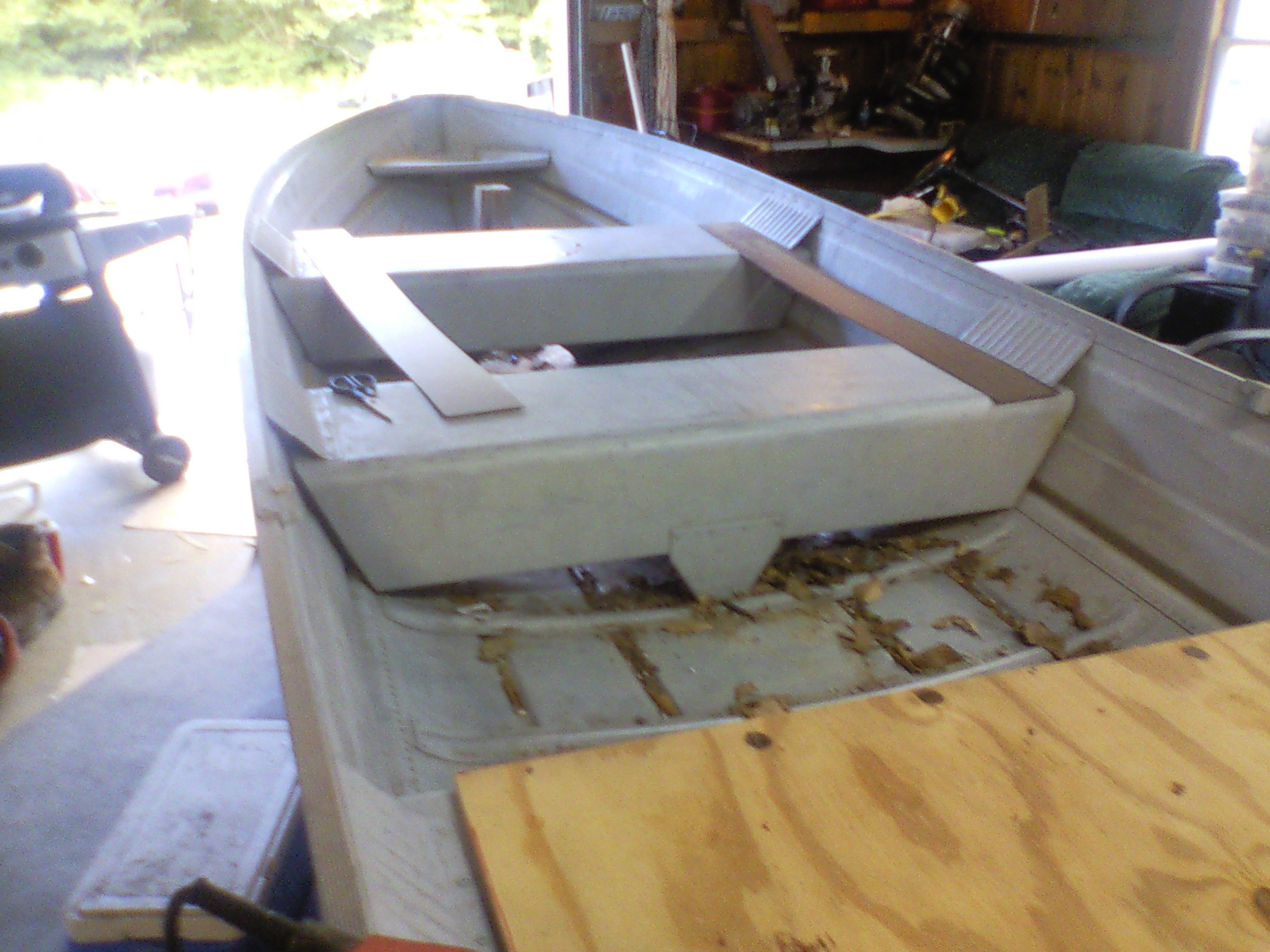Bob McFarland is an ordinary guy who likes to bass fish. So when he chanced upon some land not far from his home in Houston, Texas, he did what most bass fishermen dream of doing--he started construction of his own pond. Nine months later he was adding fish. If all goes according to plan, the largemouth bass under McFarland's tender governance will grow to brash Texas proportions by 2010 in a 6-acre watering hole that was dry land a year ago. "We'd love to even challenge the Texas state record," says the 62-year-old retiree. McFarland isn't the only fisherman breaking ground.
"Pond building is a phenomenon with its foothold in the South," says fisheries biologist and pond consultant Bob Lusk of Sadler, Texas-based Texoma Hatchery. "But it's swiftly moving to other parts of the country."
Surprisingly, you don't have to be an heir to the Trump fortune to participate in the trend. If you already have a nice chunk of land or belong to a hunting club that does, a 5- to 6-acre pond will cost no more than a glittery bass boat with a thundering outboard (see "The $25,000 Question"). Split the cost with your best fishing buddies and you have a sweet investment that keeps on giving, season after glorious bass season.
GOT WATER? Similar to the rover Spirit's probe for Martian life, the possibility of any upstart bass pond depends on the presence (or potential) of water. Beyond the size of the lake you envision, it's necessary to have an adequate watershed to fill the pond when it rains--a bare minimum of 5 acres of land for every acre of water. The amount of land necessary to yield sufficient water relates to annual rainfall, which varies from parched to diluvial locales. While runoff is the most common source, springs and even wells are other options.
The pond's ability to hold water is entirely dependent on the presence of clay. Some soils are simply too porous for the construction of an earthen dam that will keep water in rather than letting it trickle out. If your soil can't hold water, hauling in clay is an option, though an expensive one.
For a free consultation that will take into account rainfall, soil types, dam construction and, therefore, the feasibility of a pond, contact the technicians at your local office of the Natural Resources Conservation Service, a division of the U.S. Department of Agriculture. The pond savants there will advise you on the size of dam necessary and whether enough soil of the right density is present to build one. Getting the input of the NRCS--essentially their vote of yea or nay--is a crucial stepping-stone to cross before reaching the next couple of stages: first the permitting process through governmental agencies, then the solicitation of contractors to bid, excavate, and build the pond.
GENTLEMEN, START YOUR EARTHMOVERS
Sorry, friend, but you're going to have to jump through some bureaucratic and legalistic hoops before breaking ground. The degree of difficulty depends on the size of the pond and federal, state, and local regulations. A certified pond consultant can help direct clients to the proper agencies.
Consultants are also well versed in pond economics: The smaller the pond, the greater the per-acre cost. The going rate to excavate ponds of less than 20 acres is $3,000 to $5,000 per acre. Reach the 20-acre threshold and the cost drops to about $2,000 per acre.
Financial drudgery and reality aside, it's time for the fun stuff: plotting with consultants and contractors to establish bass habitat that's good for you and good for them. One such specialist in bass behavior is pro angler Alton Jones of Waco, Texas, who helped a friend orchestrate the layout of 38 acres that would become the acme of largemouth architecture.
"We wanted to put features in the lake that make the bass easier to find and catch," Jones says. "But we also wanted to create an environment that's pleasing to them and matches their preferences."
To help the bass out, Jones sought to furnish places to rest, feed, travel, and spawn. And so he started by suggesting that the contractor dredge the silted creek and integrate twists and turns into an otherwise straight channel. Since largemouths love nothing better than a point of land, Jones & Co. had a number of peninsulas sculpted to fall into 10 or 12 feet of water; others to slope at a 20-degree angle into 25 feet of water, a sanctuary from which the fish could quickly ascend to feeding grounds. For spawning purposes, pea gravel was deposited in shallow bays and on flats to provide some hard bottom, and bulldozed pathways from deep to shallow water made travel routes for the bass to follow.
For fishing in the cooler months, when largemouths gravitate to rock, the fishermen placed a pile on a channel bend, and more along a prominent point alongside the channel. And although you can't incorporate all of Jones' suggestions in smaller ponds, you can pick and choose according to your favorite fishing styles.
FISH AND THEIR FOOD
Ready, set, stock! The fish and their accompanying food chain have to come from somewhere, and that somewhere is the hatchery. The first consideration is food--bluegills, in particular. Expect a range of 500 to 1,500 comestibles per acre. "The key to fast-growing bass is having the groceries," says Barry Smith, co-owner of Alabama-based pond consultants Southern Ponds and Wildlife. You'll need 10 bluegills for every bass. Other goodies include perch and fathead minnows. Gizzard or threadfin shad are also possibilities.
In the case of McFarland's 6-acre pond, he spiked the punch with 150 mature bass, 175 Florida bass, and 50 pellet-trained bass (for spectators' benefit when the critters do dinnertime cartwheels), complemented with a buffet of 400 bluegills, 100 perch, and 45 pounds of fatheads. All told, the digging and stocking carried a price of about $24,000.
Within a year, fingerlings should grow to somewhere between 1/2 and 2 pounds, depending on local growth rates related to water temperature and fertility. One year is also long enough for the bass to reach sexual maturity and start to spawn. McFarland's pond, which he stocked last year, should be producing small though catchable bass this spring and a selection of 2- to 5-pounders in two more years. How big and how fast the bass grow depends on food plus genetics: hence his inclusion of Florida-strain bass to yield the precious few monsters that could achieve state-record proportions. The mix of pure Floridas and pure natives will breed a pool of offspring that should not only grow big but also withstand the rigors of cold weather. Even so, Lusk says Floridas are best stocked south of a geographical line running approximately through Oklahoma City, Little Rock, Memphis, and Nashville.
What's the catch? Often, the food chain can't do everything on its own, which rules out laissez-faire stewardship. "The smaller the pond, the more management," Jones says. "Bigger means greater diversity, and the lake pretty much keeps itself in check."
Seek the guidance of pond consultants regarding phosphorus- and nitrogen-based fertilizers and timed feeders to subsidize the food chain.
THE END RESULT
What you get out of a pond depends upon what you put into it. Lake Fork--like monsters are one thing. Plenty of bass and panfish for entertainment purposes are another. Catfish are one more possibility. So, too, are pond excavations with deep water around the edges for shore-fishing opportunities.
And if one pond entrepreneur builds with his grandchildren's grandchildren in mind, another does so for the here and how. Take the case of an 85-year-old who figured he hadn't the time to wait for little fishes to grow up. Two weeks after he stocked his lake with adult bass, he pulled out a 9-pounder--an enormous stocked adult.
Ultimately, it's all about the bass--aided and abetted by whatever it takes to make them feel at home where there was once dry land.
--An earthen dam works only if the soil is suitable for holding water
--Digging pathways from shallow to deep water will allow bass to move comfortably between feeding zones
--Spice things up by dredging bends in typically straight creek beds
--Bass can't resist a rock pile placed near a deep channel
--Submerged peninsulas that slope to 12 feet of water provide a sanctuary for bass
--Anchoring structure, such as thick limbs or Christmas trees, gives baitfish and bass a place to hide
--Bluegills are the No. 1 forage fish for bass, but perch and fathead minnows round out the menu
--Adding pea gravel to shallow areas creates a perfect spawning site
THE $25,000 QUESTION HOW MUCH FOR A 5-ACRE BASS FISHING NIRVANA?
For the perfect pond site, expect to pay $3,000 to $5,000 per acre, permitting and dam building included. (In some cases, where the terrain is lacking suitable soil, the cost could spiral to $10,000 per acre.) Beyond the architecture, finned critters are going to set you back up to $500 per acre for baby bass and a buffet of baitfish. You're looking at $15,000 minimum for excavation and permits and $2,500 for an embarrassment of fishes. Throw in feeders and other minor necessities and you'll max out around $25,000. --D.S.
POND BUILDING 101 FOUR INDISPENSABLE RESOURCES FOR CREATING A BASS HAVEN
Agriculture Handbook #590: Ponds--Planning, Design and Construction. Despite the yawner of a title, this tidy little primer from the U.S. Department of Agriculture's Natural Resources Conservation Service (formerly the U.S. Soil Conservation District) is a handy resource. www.nrcs.usda.gov
Great Small Waters. This 45-minute video produced by bass impresario Ray Scott, founder of the Bass Anglers Sportsman Society, details the soup-to-nuts process of building a bass pond in a friendly, informative manner. 334-281-3661; www.rayscott.com
Pond Boss. Fisheries biologist and pond consultant Bob Lusk of Texoma Hatchery puts out this bimonthly magazine with helpful insights on dam construction, aeration systems, weed management, and other pertinent topics. 800-687-6075; www.pondboss.com
Southern Ponds and Wildlife. This useful quarterly publication and website offers pond research and management information. 334-281-7770; www.southernpondsandwildlife.com --D.S.
Special Charters for Deep Sea Fishing



Copyright © www.mycheapnfljerseys.com Outdoor sports All Rights Reserved